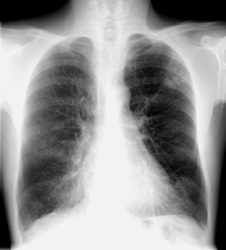
Bronchiectasis
A person may be born with bronchiectasis or may acquire it later in life as a result of another disorder. Most cases of bronchiectasis begin in childhood as a complication from an infection or by inhaling a foreign object.
What is bronchiectasis?
Commonly misdiagnosed as asthma or pneumonia, bronchiectasis is an abnormal enlarging, stretching and deformation of the respiratory passages caused by mucus blockage. The disease results from a cycle that begins when mucus is not effectively rid from the body and it gradually accumulates in the airways. This accumulation causes an infection, inflammation and further accumulation of bacteria, which weakens and widens the passages to the point where the lung is easily collapsible.
Causes
Cystic fibrosis causes about 50% of all cases of bronchiectasis in America today. It can also be caused by a recurrence of severe lung infections, an obstruction of the airway by a foreign object or by routinely breathing in food particles while eating.
Symptoms
Symptoms of bronchiectasis do not appear immediately, but instead often develop gradually and may take months or years to appear. Common symptoms include a chronic cough, coughing up blood, shortness of breath, weight loss, fatigue, wheezing, breath odor and skin discoloration.
Treatment
Once diagnosed, antibiotics and expectorants are often prescribed and regular, daily drainage.
